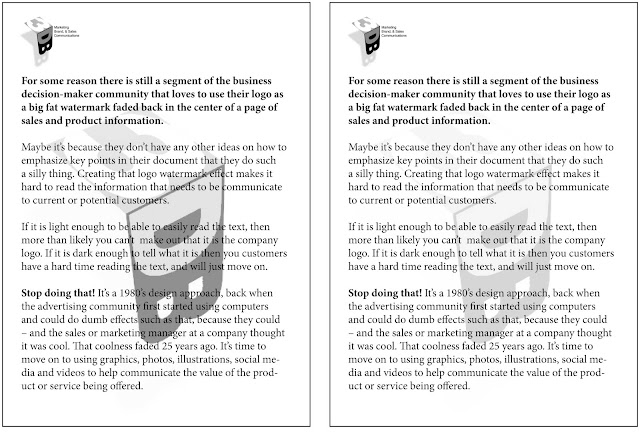When most sales people make a presentation, they assume that the most effective way to gain acceptance and buy-in from prospects is by sharing all of the many features of their product or service as they have time for. The reality is that when they are trying to communicate value to a prospect, they must first gain the prospect’s attention. That is the first obstacle to overcome, because most people really don’t listen to what the salesperson is saying, they just simply remain quiet and wait for their turn to talk. People love to talk more than they like to listen to others.
They key to engaging your prospects is to construct your presentation around their needs and what kind of listener they are; as opposed to overwhelming them with what you have to offer.
The way you construct your presentation to fully engage them, is to understand how they listen and absorb information. There are three general ways in which people listen and absorb information – Visual, Auditory, and People-Persons. First, the visual people relate to the world generally by the way they see things. When they speak, they will use terms like “I see, what you’re saying” or “I can see why you would think that way”.
Visual people better relate and “get” your message by seeing pictures, diagrams, flow charts, and other descriptive imagery. Visual people also like to observe others and may be fascinated with photography or things that generally involve envisioning. They will remember concepts, product names and the value you offer – as a result of a visual cue that they receive. Also important, is the “professional look” of your brand, and they will compare your brand’s image to your competitions brand. If you look cheap, they will think your product is cheap, and they will expect your prices to be cheap too.

Visual people listen better when following a visual story and the value you have to offer – when it is clearly written down. When trying to influence a visual person, your best bet is to provide them with visual examples, “proof on paper” of what you’re speaking about. A marketing piece that is specifically designed to be left behind – that summarizes your presentation, is more effective for them to not only remember your points, but be able to retell your story to other stakeholders in the decision making process.
It takes patience and a little extra work to create a presentation that appeals to all three types of listeners. I've heard comments like, “I don’t have time for that, I have sales calls to make” or, “I have no idea how to vary my presentation to appeal to all audiences, I just use what the company gives me”. In the long run, making the effort, or hiring someone who can create those tweaks for you, will make for a higher percentage of sales wins for you and your company. You can run around from call to call – putting lots of lines in the water and hoping for a big hit, or know how to cast an effective sales presentation and catch more customers on a regular basis.
The next couple of blogs will talk about the other two ways people listen and absorb information – and how to identify the other types of listeners, click to follow, and you will get a ding when the next blog is posted.















